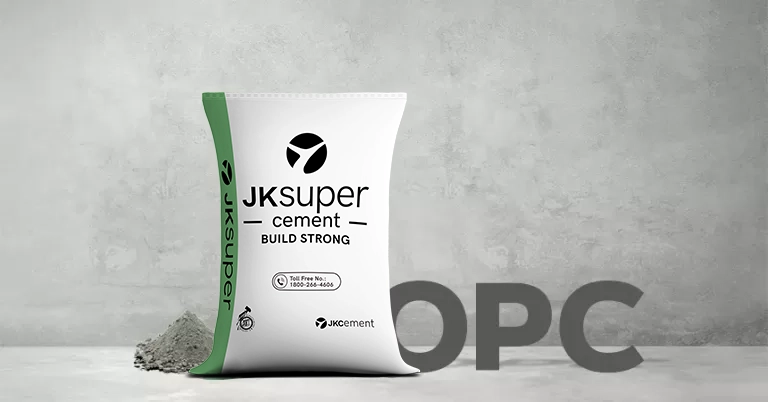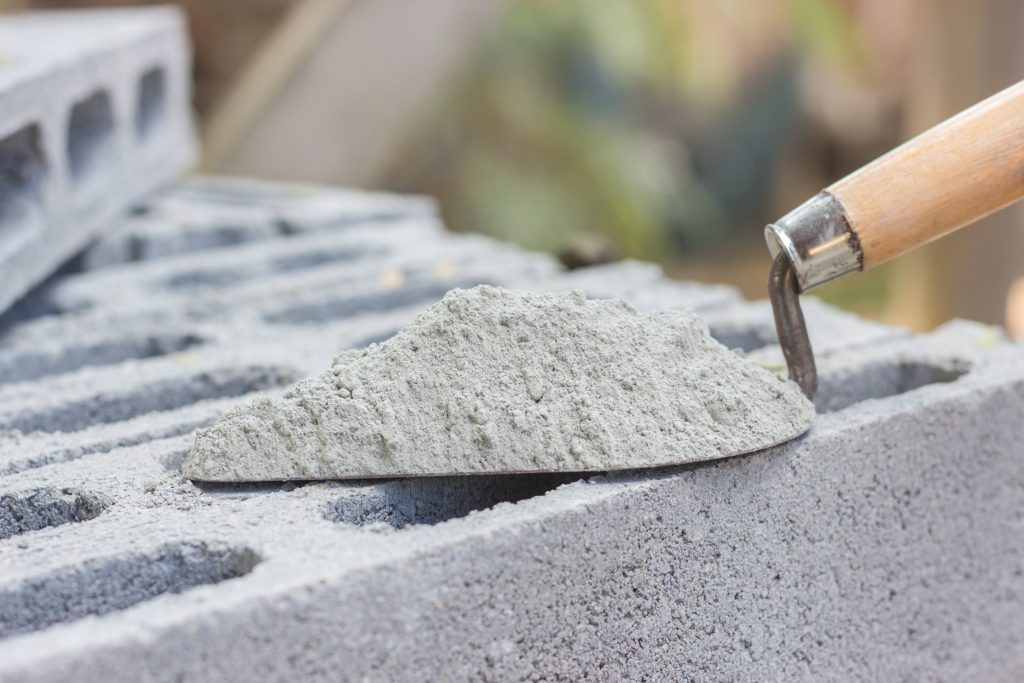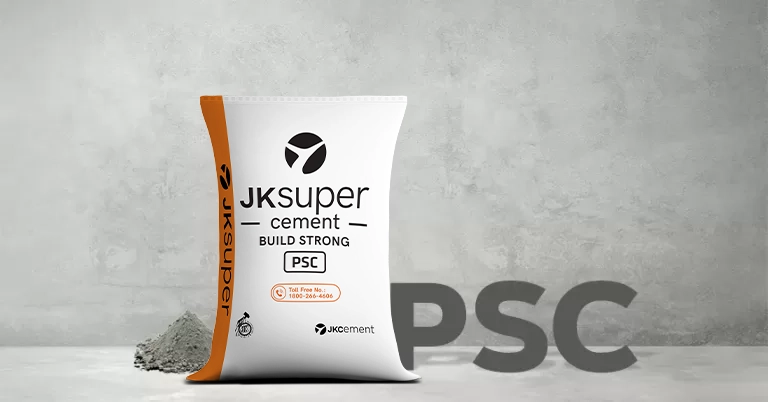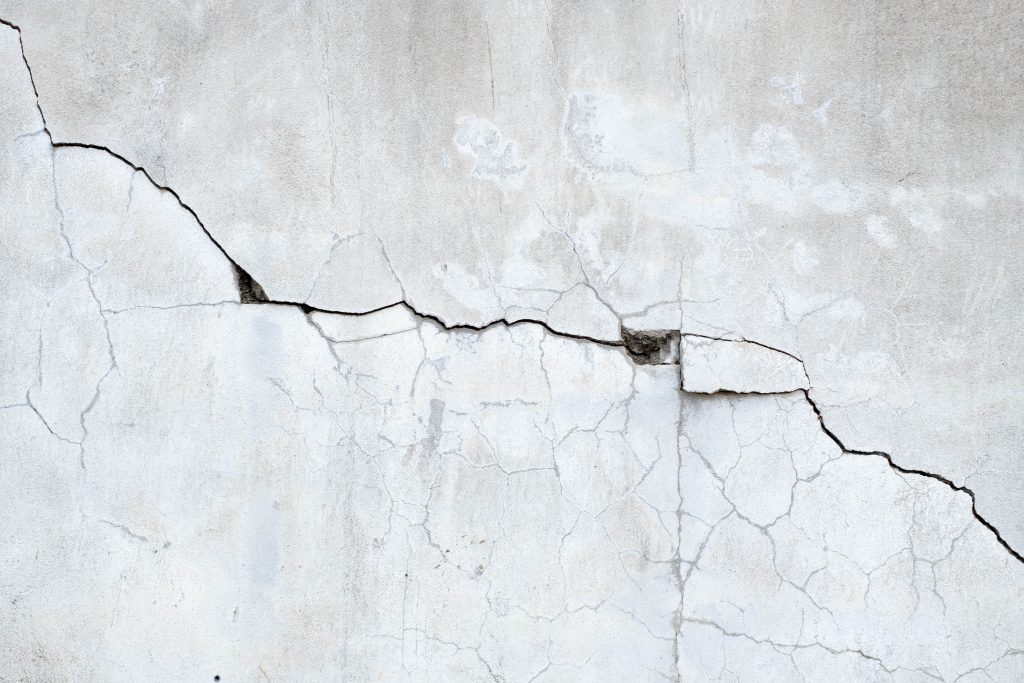Portland cement is a widely used cement across construction projects. Different construction projects may require different types of Portland cement. The three main categories of Portland cement are Ordinary Portland Cement (OPC), Portland Pozzolana Cement (PPC) and Portland Slag Cement (PSC). OPC is a hydraulic cement that is made up of Portland cement clinker and gypsum. OPC is used in almost all general construction.
What is OPC in Cement?
Short for Ordinary Portland Cement, OPC is a type of Portland cement that is mixed with water and aggregates to form concrete, mortar or plaster. Other constituents like pozzolana and slag are added to OPC to form blended cements.
Types of Ordinary Portland Cement
Based on the compressive strength that it OPC provides, OPC is divided into three grades:
-
OPC 33 Grade1
Ordinary Portland Cement with a compressive strength of 33N/mm2 at 28 days is OPC 33. While OPC 33 is suitable for all general construction, it is particularly used for masonry and plastering.
-
OPC 43 Grade2
OPC 43 is cement with a compressive strength of 43N/mm2 at 28 days. Along with general construction, OPC 43 Grade cement is suitable for high strength concrete work. Cement that is used for railway sleepers is designated as 43-S grade.
-
OPC 53 Grade3
Ordinary Portland Cement 53 Grade has a strength of 53N/mm2 at 28 days. OPC 53 is mostly used for precast concrete, prestressed concrete, long span structures like bridges, tall buildings, etc. OPC 53 specially used for railway sleepers are referred to as 53-S grade.
How is Ordinary Portland Cement Made?
The following is the manufacturing process for Ordinary Portland Cement:
- Source Raw Materials
Raw materials like limestone and clay are obtained from blasting rock quarries with explosives. The raw material is then transported to grinding units.
- Grind Limestone and Clay
Various types of grinders grind the limestone and clay into finer particles to achieve a homogenous blend.
- Heat The Mixture
The homogenous blend of raw materials is heated in kiln at high temperatures. The manufacturer may add additional ingredients per the type of cement. The heated mixture forms clinker.
- Grind Clinker
Clinker is intimately ground with gypsum to form Ordinary Portland Cement.
Properties of Ordinary Portland Cement4
The following are the physical properties of OPC:
- Fineness: It indicates the particle size of cement which impacts the surface area and, in turn, the heat of hydration.
- Soundness: Soundness of cement is the volume change when its set and hardened.
- Setting Time: Setting time is the taken by the cement and water paste to turn from its plastic state to its hardened stage.
- Initial Setting Time: The initial time is the time when cement turns into paste when mixed with water and begins losing its plasticity.
- Final Setting Time: The time when cement loses its plasticity completely after it has been mixed water is the final setting time.
- Compressive Strength: Compressive strength refers to the capacity of concrete to withstand load without cracking or deflecting.
| Sr. No | Characteristic | OPC 33 | OPC 43 | OPC 43-S | OPC 53 | OPC 53-S |
| 1 | Fineness | 225 m2/kg | 225 m2/kg | 370 m2/kg | 225 m2/kg | 370 m2/kg |
| 2 | Soundness | |||||
| 2.a | Le Chatelier method, max | 10 mm | 10 mm | 5 mm | 10 mm | 5 mm |
| 2.b | Autoclave test method, max | 0.8% | 0.8% | 0.8% | 0.8% | 0.8% |
| 3 | Setting Time | |||||
| 3.a | Initial, minimum | 30 mins | 30 mins | 60 mins | 30 mins | 60 mins |
| 3.b | Final, maximum | 600 mins | 600 mins | 600 mins | 600 mins | 600 mins |
| 4 | Compressive Strength N/mm2 | |||||
| 4a | 3 Days | 16 | 23 | 23 | 27 | 27 |
| 4b | 7 Days | 22 | 33 | 37.5 | 37 | 37.5 |
| 4.c.i | 28 Days, minimum | 33 | 43 | 43 | 53 | 53 |
| 4.c.ii | 28 Days, maximum | 48 | 58 | – | – | – |
Chemical Composition Of OPC
- Lime: Calcium Oxide derived from limestone or chalk makes up a greater portion of the cement’s composition. Both, limestone and chalk are calcium carbonate materials.
- Silica: Silica is sourced from sand or clay and is the second highest chemical found in cement. During the cement’s manufacturing process, silica reacts with calcium to form di-calcium and tri-calcium silicates.
- Iron Oxide: Iron oxide sourced from iron ores is favourable for producing high early strength cements.
- Alumina: Aluminum oxide is sourced from clay and shale and helps accelerate the hydration reactions.
- Gypsum: Gypsum is added to cement to help control the setting time.
Advantages of Ordinary Portland Cement
Here’s why OPC is a popular cement choice:
- OPC and its various grades can be used for almost all types of construction.
- Its low alkali content provides improved protection from alkali-aggregate reactions.
- It has superior resistance to sulphate attacks making it ideal for marine constructions.
- It offers high early strength which helps speed up construction.
Explore a range of JK Super Cement – OPC for all your construction needs.
FAQs
What is cement?
Cement is a binding agent which when mixed with water helps bind aggregates like sand, gravel or crushed rock. Cement is a finely ground powder made up of calcareous and argillaceous materials.
What is the shelf life of Ordinary Portland Cement?
The shelf life of OPC is typically printed on its packaging. Generally, Ordinary Portland cement may have a shelf-life of three to six months. If cement is stored for extended periods, ensure you test the cement before use. Also, place the cement in a dry place to prevent it from dampness.
What is curing of concrete?
Curing is defined as the process of maintaining satisfactory moisture conditions and temperature in the concrete so that the chemical reaction of hydration to develop strength in concrete.
What is an admixture?
An admixture is a material other than cement, aggregates, and water, used as an ingredient in a cement mix. This helps modify the properties of cement to enhance strength and durability as needed.
What are the factors that affect the strength of concrete?
Factors affecting the strength of concrete include water-cement ratio in the cement paste, cement-aggregate ratio, the shape and size of aggregates, and the type of cement.
What is alkali-silica reactivity?
Alkali-silica reactivity (ASR) is a reaction between potassium and sodium alkalis and reactive forms of silica present in the aggregates (sand or gravel). ASR can also occur between pozzolans, admixtures and water. An alkali-silica gel is formed which draws water from the cement paste surrounding it. The gel expands and induces pressure and leads to cracking of the aggregate.
*Disclaimer: The information provided above is for general purpose and should not be used as a substitute for professional advice.
















